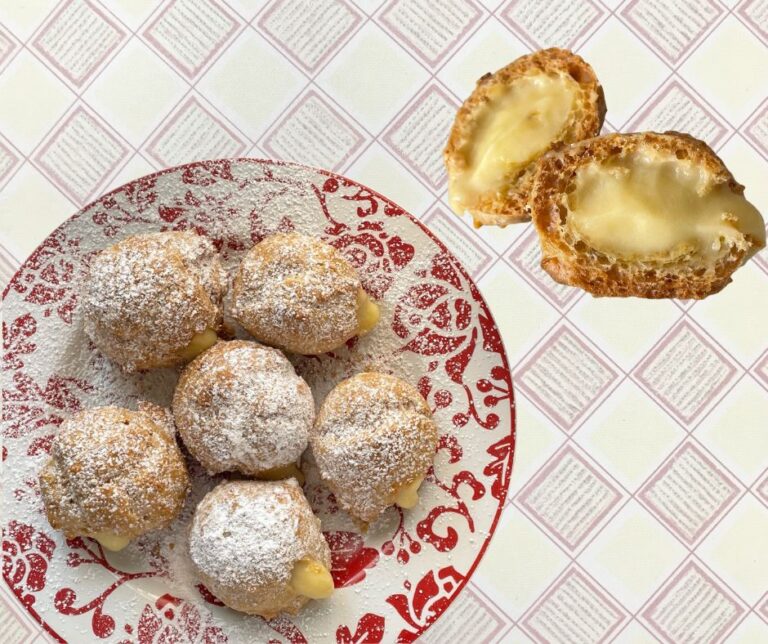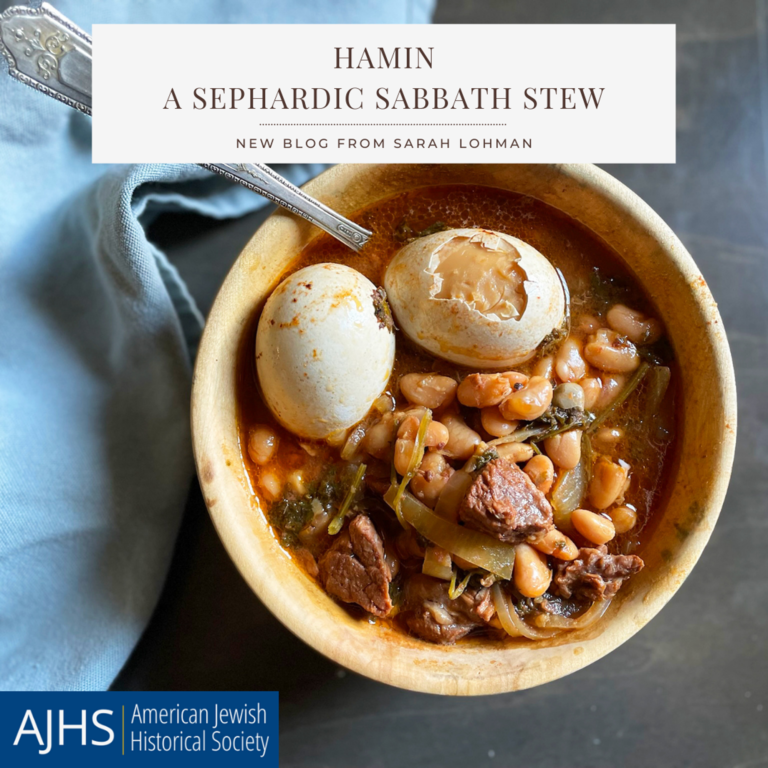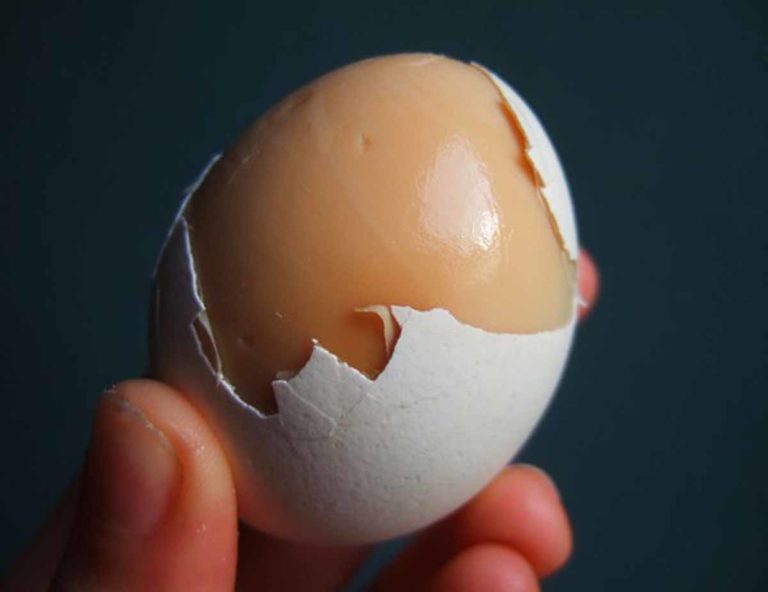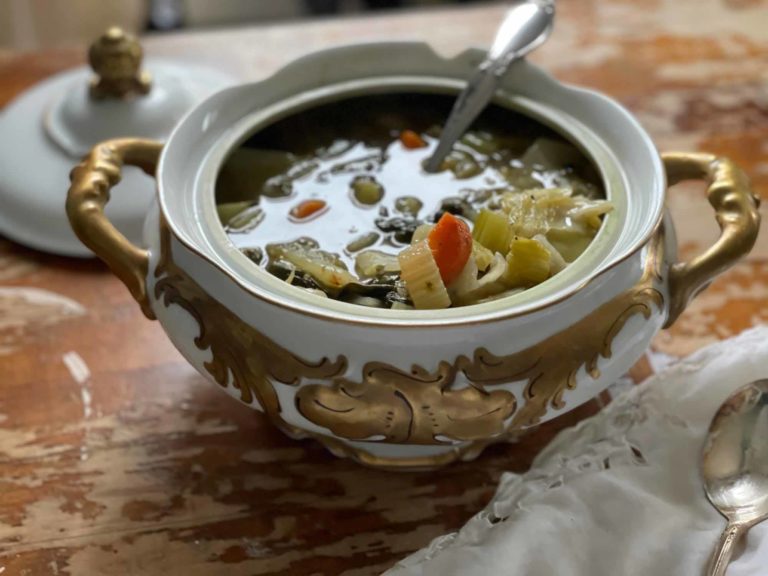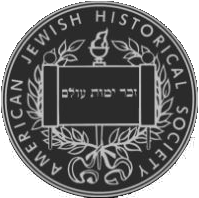Bubbe won’t believe it!
Whenever I’m invited to a Seder I always try to bring dessert. My go-to is Russ and Daughters’ chocolate toffee matzos; macaroons; or a selection of Joyva jelly rings are always a good fall back. I bring dessert because dessert is the hardest part of the meal. How do you create a satisfying end to a feast without flour or dairy?
Well, at the turn of the 20th century, balaboostas strove to execute excellent desserts using nothing but matzo, faith, and the instructions of a reliable cookbook. The struggle with a matzo-based dessert is similar to that of matzo balls: the pastry must be light and delicate and stick to Kosher guidelines. A peek through the historical cookbook collection at AJHS revealed challenging Passover dessert recipes like Charlotte Russe, Crowning Glory Orange Souffle, and Lemon Meringue Cake Roll.
In 1930, the Manischewitz company released Tempting Kosher Dishes, a book of recipes featuring their line of matzo products. The book is charming; the covers and end papers feature a design of red and white diamonds reminiscent of a picnic tablecloth or kitchen tile, but upon closer inspection, the white diamonds are actually darling illustrations of matzo. The book reads in English with the pages flipping to the left, and Yiddish with the pages flipping to the right.

Tempting Kosher Dishes offers an enormous variety of matzo-based desserts, including Cocoa Torte, Root Beer Cake, even an almond Sponge Cake! I’ve actually made a few recipes from this book before: Feather Balls and a Matzo Meal Pie Crust. The former was fine, and the latter looked bizarre but tasted amazing. This time, I decided to take on the Matzo Meal Cream Puffs with an entirely Kosher-for-Passover filling.
I’ve made cream puffs many times before, and I’m good enough that I can (and do!) teach a cream puff baking class. Paté au choux, the dough of a classic cream puff, is one of the easier French pastries, but at the same time, the ingredients and technique have to be precise for the puffs to turn out just right. The secret to cream puffs is steam; the dough has to be elastic and moist, so that when it’s blasted with heat in the oven, the steam puffs up the balls. Then the dough must bake firm and crisp to hold its shape and not collapse. Could matzo meal, I wondered, truly do all of that?

I could only wait and see. After dumping a cup of matzo meal into hot water and fat and stirring in eggs until my biceps ached, I scooped balls of dough onto a cookie sheet and slid it into the hot oven. Compared to a classic paté au choux, the puffs baked for an extraordinarily long time, over an hour. But after their first 25 minutes at high heat, I ventured a peak into the oven – and they had puffed!! I turned the heat down and let them bake another 45 minutes. In the end, I think they were slightly overdone, but that’s a simple fix of reducing the baking time. The matzo choux were puffed, crisp, and when cut open, revealed the customary hole for the cream filling. I was astounded.
While I’m not confident these are better than a classic cream puff, they are not a flimsy copy. These cream puffs are a feat of pastry engineering, an illusion that can dispel matzo fatigue. And most importantly, they are delicious! Especially when filled with a coconut-lemon curd filling.
Serve these cream puffs at Passover, and it won’t just be your brisket that’s the star of the show. Your Bubbe simply won’t believe it’s matzo meal – but she’ll take another bite anyway!
Original recipe from Tempting Kosher Dishes, 1930:
Cream Puffs
- 1 cup water
- ⅓ cup vegetable shortening
- ½ teaspoon salt
- 1 cup matzo meal
- 4 eggs
Makes about 20 puffs.
- Preheat oven to 450 degrees.
- Bring water, vegetable shortening, and salt to a boil in a heavy-bottomed saucepan over high heat.
- Crack eggs into a liquid measuring cup with a handle and pour spout.
- When the shortening has melted, add matzo meal and stir vigorously with a heat-safe spatula until dough no longer sticks to the sides of the pan.
- Remove from heat, and add eggs one at a time from the measuring cup, stirring each one in quickly and vigorously with the spatula.
- Using a spoon or a cookie scoop, drop tablespoon-sized balls of dough onto a greased cookie sheet.
- Bake for 25 minutes; do not open the oven door during this time.
- Turn down heat to 325 degrees after 25 minutes has passed–now you can open the oven door for a minute to peak. Hopefully, your puffs have puffed, and opening the door helps to let out some steam.
- Bake another 35-45 minutes until puffs are deep golden brown on top, and when sliced open, reveal a pocket in the center.
- Allow pastries to cool completely on a wire rack. These are best made the day before and allowed to sit out overnight to get slightly stale (but put them in a sealed container if the weather is humid).
- Fill 2-4 hours before serving, either by slicing horizontally three-quarters of the way through and spooning in a generous dollop of filling; or, poke a hole in the bottom of the puff with a paring knife and use a pastry bag fitted with a metal tip to fill. Dust top of puffs with powdered sugar.

For the Filling
I first tried the filling recipe from Tempting Kosher Dishes, and it didn’t pass muster. First of all, it includes butter, which means it’s difficult to serve after a Passover Seder. Second, since the primary liquid used is water, it came out pretty tasteless. And third, it’s too loose; a cream puff filling must be firm so it doesn’t ooze out. So, I used the historical recipe as a point of inspiration, consulted several similar modern vegan recipes, and came up with the tasty filling below.
For the coconut milk, you want the kind in the can, and preferably a Thai brand because it’ll contain more fat, which will add to the richness of the filling. When you open the can, whisk any solidified fat into the milk using a wire whisk or immersion blender. Cornstarch works better than potato flour as a thickener (note that corn starch is not considered Kosher for Passover if you’re Ashkenazic, but it is considered Kosher for Passover if you’re Sephardic).
You will need:
- 2 eggs
- ¾ cup sugar
- 2 tbsp potato flour or cornstarch
- Zest and juice of one lemon
- 1 cup coconut milk
- ½ tsp lemon extract (optional)
Filling Instructions:

- In a glass or otherwise heat-safe bowl, beat the eggs well.
- In a separate bowl, whisk together sugar and potato flour or cornstarch.
- Add to eggs a to sugar and thickener mix, whisking constantly.
- Add lemon juice, zest, and coconut milk.
- Cook in a double boiler until thick, about 20 minutes. Whisk occasionally, and constantly the last five minutes. When thick, stir in extract if using.
- Remove from heat and allow to cool to room temperature.
- Press plastic wrap on the surface of the custard, then refrigerate overnight.
- If the custard is too stiff the next day, whisk vigorously to loosen it.
- Enjoy!

